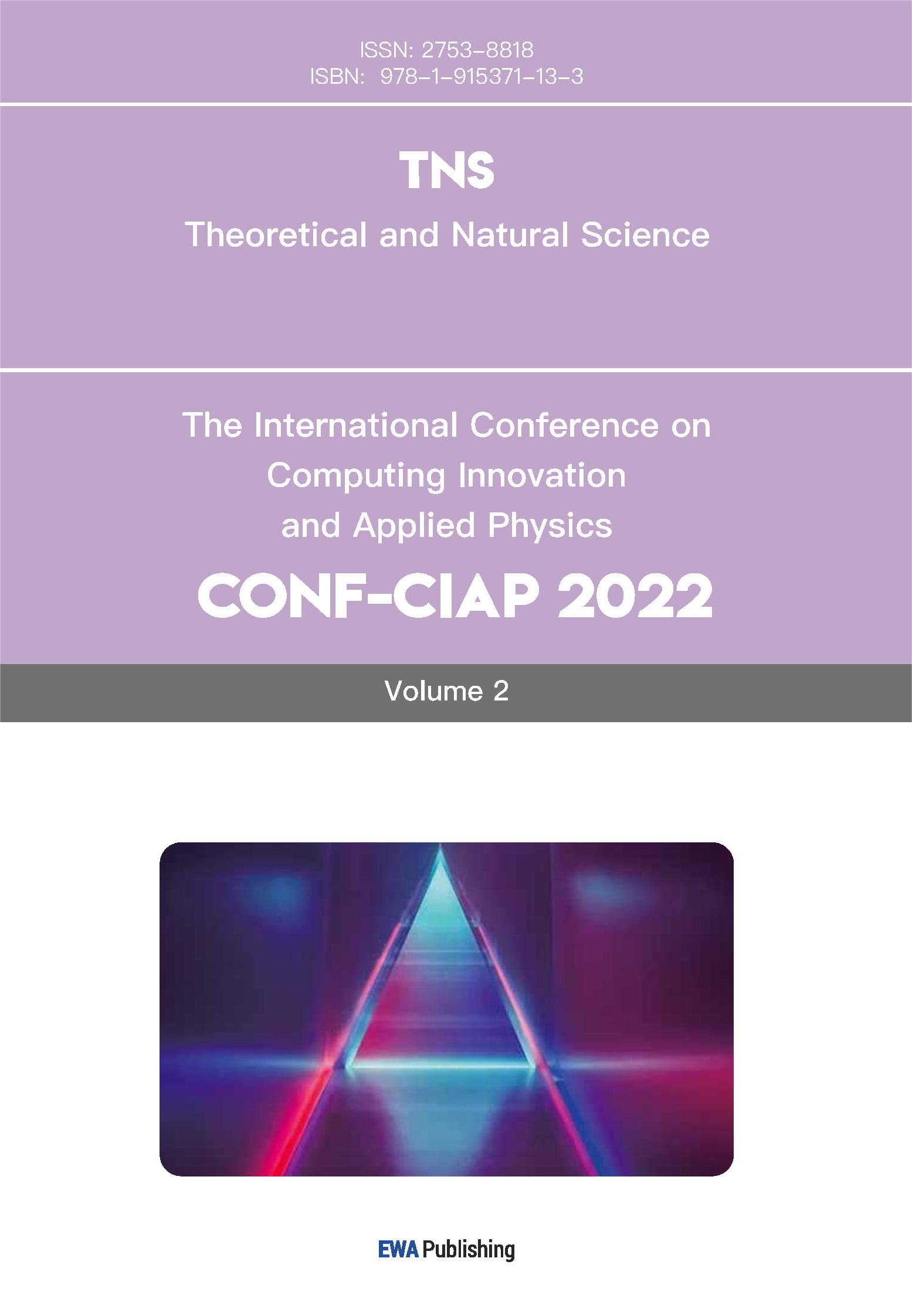References
[1]. Alao, J. O., Otorkpa, O. J., Ayejoto, D. A., & Saqr, A. M. (2025). Assessing the community knowledge on waste management practices, drinking water source systems, and the possible implications on public health systems. Cleaner Waste Systems, 11, Article 100295. https: //doi.org/10.1016/j.clwas.2025.100295.
[2]. USEPA, 2022. Toxics Release Inventory (TRI) Program. US EPA [WWW Document]. URL. https: //www.epa.gov/toxics-release-inventory-tri-program (accessed 6.26.22).
[3]. Haque, M. A., Khatun, B., Jewel, M. A. S., Ara, J., Kazal, M. S. I., & Hasan, J. (2024). Assessment of water quality and heavy metal indices in a tropical freshwater river for aquatic life and public health standard. Ecological Indicators, 169, Article 112862. https: //doi.org/10.1016/j.ecolind.2024.112862.
[4]. Zhang, S., Fu, K., Gao, S., Liang, B., Lu, J., & Fu, G. (2023). Bioaccumulation of heavy metals in the water, sediment, and organisms from the sea ranching areas of Haizhou Bay in China. Water, 15(12), Article 2218. https: //doi.org/10.3390/w15122218.
[5]. Bixler, T. S., Collins, M. R., & Mo, W. (2024). Risk-based public health impact assessment for drinking water contamination emergencies. Science of the Total Environment, 931, Article 172966. https: //doi.org/10.1016/j.scitotenv.2024.172966.
[6]. Brown, M. R., Camézuli, S., Davenport, R. J., Petelenz‑Kurdziel, E., Øvreås, L., & Curtis, T. P. (2015). Flow cytometric quantification of viruses in activated sludge. Water Research, 68, 414–422. https: //doi.org/10.1016/j.watres.2014.10.018.
[7]. Ward, R. L., Bernstein, D. I., Young, E. C., Sherwood, J. R., Knowlton, D. R., & Schiff, G. M. (1986). Human rotavirus studies in volunteers: Determination of infectious dose and serological response to infection. Journal of Infectious Diseases, 154(5), 871–880. https: //doi.org/10.1093/infdis/154.5.871.
[8]. World Health Organization. (2011). Guidelines for drinking-water quality (4th ed.). https: //www.who.int/publications/i/item/9789241548151.
[9]. Liu, G., Qu, J., Rose, J., & Medema, G. (2022). Roadmap for managing SARS-CoV-2 and other viruses in the water environment for public health. Engineering, 12, 139–144. https: //doi.org/10.1016/j.eng.2020.09.015.
[10]. Straub, T. M., & Chandler, D. P. (2003). Towards a unified system for detecting waterborne pathogens. Journal of Microbiological Methods, 53, 185–197. https: //doi.org/10.1016/S0167-7012(03)00023-X.
[11]. Inkster, T., Caldwell, I., Aird, H., Willis, C., Lai, S., & Mallon, J. (2024). Development and evaluation of test methods for the detection and enumeration of opportunistic waterborne pathogens from the hospital environment. Journal of Hospital Infection, 149, 98–103. https: //doi.org/10.1016/j.jhin.2024.04.008.
[12]. Heijnen, L., de Vries, H. J., van Pelt, G., Stroobach, E., Atsma, A., Vranken, J., De Maeyer, K., Vissers, L., & Medema, G. (2024). Qualitative detection of E. coli in distributed drinking water using real-time reverse transcription PCR targeting 16S rRNA: Validation and practical experiences. Water Research, 259, 121843. https: //doi.org/10.1016/j.watres.2024.121843.
[13]. Tiwari, A., Ahmed, W., Oikarinen, S., Sherchan, S. P., Heikinheimo, A., Jiang, G., Simpson, S. L., Greaves, J., & Bivins, A. (2022). Application of digital PCR for public health-related water quality monitoring. Science of the Total Environment, 837, 155663. https: //doi.org/10.1016/j.scitotenv.2022.155663.
[14]. Sivaganesan, M., Dean, S. A., Willis, J. R., Friedman, S. D., Haugland, R., & Shanks, O. C. (2025). A streamlined qPCR method for characterization of Enterococcus spp. levels in ambient surface water samples. Water Research, 284, 123936. https: //doi.org/10.1016/j.watres.2025.123936.
[15]. Sun, K., Fan, G., Dong, H., Fan, Y., Xie, Y., Liang, K., & Zhang, Y. (2024). Water-cooling-based and low-cost qPCR device for rapid nucleic acid analysis. Sensors and Actuators A: Physical, 375, 115496. https: //doi.org/10.1016/j.sna.2024.115496.
[16]. Zhao, B., Fujita, T., Nihei, Y., Yu, Z., Chen, X., Tanaka, H., & Ihara, M. (2023). Tracking community infection dynamics of COVID-19 by monitoring SARS-CoV-2 RNA in wastewater, counting positive reactions by qPCR. Science of The Total Environment, 904, 166420. https: //doi.org/10.1016/j.scitotenv.2023.166420.
[17]. Vu Duc Canh, Torii, S., Furumai, H., & Katayama, H. (2021). Application of capsid integrity (RT-)qPCR to assessing occurrence of intact viruses in surface water and tap water in Japan. Water Research, 189, 116674. https: //doi.org/10.1016/j.watres.2020.116674.
[18]. National Institute of Standards and Technology (NIST). (2021). Certificate of Analysis: Standard Reference Material 2917, Plasmid DNA for Fecal Indicator Detection and Identification. Gaithersburg, MD: U.S. Department of Commerce. https: //doi.org/10.6028/NIST.SP.260-221.
[19]. Borgolte, S., Menzel, W., & Varrelmann, M. (2025). One-step TaqMan® RT-qPCR detection of sugar beet-infecting poleroviruses in Myzus persicae from yellow water pan traps opens up new possibilities for early risk assessment of virus yellows disease. Journal of Virological Methods, 331, 115052. https: //doi.org/10.1016/j.jviromet.2024.115052.
[20]. Sthapit, N., Thapa, B. R., Limam, T., Maharjan, R., Dhakal, U., Jhun, I., Cho, K. H., Sherchan, S. P., Yu, X., Ouyang, W., & Han, J. (2025). Digital PCR-based assessment of pathogens in wastewater and antibiotic resistance genes in drinking water of the Kathmandu Valley, Nepal. Journal of Environmental Management, 389, 126120. https: //doi.org/10.1016/j.jenvman.2025.126120.
[21]. Roman, V., Jourdain, F., Pele, E., Brottet, E., Guinard, A., Mouly, D., Medragh, S., Cordevant, C., Gassilloud, B., & Dina, J. (2025). Tracking wild-type measles virus in wastewater using multiplex RT-dPCR: A novel tool for measles surveillance. Water Research, 287, 124379. https: //doi.org/10.1016/j.watres.2025.124379.
[22]. Chailler, E., Le Bayon, H., Dairain, A., Riquet, F., Stout, L., Chambouvet, A., & Smits, M. (2025). Digital PCR (dPCR) vs. quantitative PCR (qPCR) approaches for quantification of two Perkinsus species within clam tissue samples. Journal of Invertebrate Pathology, 213, 108417. https: //doi.org/10.1016/j.jip.2025.108417.



